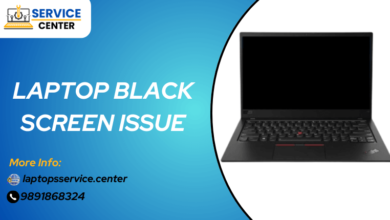Troubleshooting Dell Laptop Slowness Issue on Windows 10

Is your Dell laptop running slower than usual on Windows 10? Don’t worry; you’re not alone. Many users encounter performance issues with their laptops over time, but fortunately, there are several troubleshooting steps you can take to address the problem. In this guide, we’ll walk you through each step to help you diagnose and fix the slowness issue on your Dell laptop running Windows 10.
Checking Dell Laptop System Resources for Performance Optimization
The first step in troubleshooting a slow Dell laptop is to check its system resources. Press Ctrl + Shift + Esc to open the Task Manager. Here, you can see which processes and applications consume the most CPU, memory, disk, and network resources. If you notice unusually high usage, consider closing unnecessary programs or restarting your laptop to free up resources.
Optimizing Dell Laptop Performance with Software Updates
Outdated software can also contribute to performance issues. Ensure your Dell laptop’s operating system and drivers are up to date. Go to Settings > Update & Security > Windows Update to check for and install any available updates. Additionally, visit Dell’s support website to download and install the latest drivers for your laptop model.
Optimizing Dell Laptop Startup Programs for Improved Performance
Too many programs launching at startup can slow down your Dell laptop’s boot time and overall performance. To optimize startup programs, open the Task Manager (Ctrl + Shift + Esc), go to the Startup tab, and disable any unnecessary programs from starting automatically. Be careful not to turn off essential system processes.
Clearing Temporary Files and Cache
Temporary files and cached data can accumulate over time and take up valuable disk space, slowing down your Dell laptop. To clear these files, open the Disk Cleanup utility by typing “Disk Cleanup” in the Windows search bar and selecting the appropriate option. Follow the prompts to clean up temporary files, system files, and other unnecessary data.
Read More: Lenovo Laptop Stuck on the Startup Screen? Quick Fixes Here!
Running Disk Cleanup and Defragmentation
In addition to clearing temporary files, running disk cleanup and defragmentation can help optimize your Dell laptop’s storage drive for better performance. As mentioned earlier, open the Disk Cleanup utility and select the option to clean up system files. Once that’s done, you can run the built-in Disk Defragmenter tool by searching for “Defragment and Optimize Drives” in the Windows search bar.
Monitoring and Managing Background Processes
Background processes running on your Dell laptop can consume CPU and memory resources, leading to sluggish performance. Use the Task Manager to monitor and manage these processes effectively. Look for unnecessary or resource-intensive processes and consider ending them if they’re optional.
Scanning for Malware and Viruses
Malware and viruses can significantly impact your Dell laptop’s performance and compromise data security. Regularly scan your computer for malware using a reputable antivirus program. Windows Defender, pre-installed with Windows 10, offers protection against malware and viruses.
Adjusting Power Settings
Your Dell laptop’s power settings can also affect its performance. To optimize power settings for better performance, go to Control Panel > Power Options and select the High-Performance plan. This plan prioritizes performance over energy efficiency and can help improve your laptop’s responsiveness.
Updating Device Drivers
Outdated or faulty device drivers can cause compatibility issues and performance problems for your Dell laptop. Keep your drivers updated by regularly checking for updates on Dell’s support website or using third-party driver update software. Install updates for your graphics card, network adapter, and other essential hardware components.
Read More: Maximize Your Hp Laptop’s Speed: Slow Performance Fixes
Considering Hardware Upgrades
Considering hardware upgrades, if you’ve tried all the software optimization steps mentioned above and your Dell laptop is still running slow. Upgrading your laptop’s RAM, replacing the hard drive with a solid-state (SSD), or upgrading to a faster processor can significantly improve performance. However, remember that hardware upgrades can be costly and may void your warranty, so proceed with caution.
Conclusion
Troubleshooting a slow Dell laptop on Windows 10 can be a trial and error, but following the steps outlined in this guide, you should be able to diagnose and fix the issue effectively. Remember to regularly maintain your laptop by keeping software up to date, optimizing system resources, and practising good digital hygiene to prevent performance problems in the future. If you’re still experiencing issues, please get in touch with Dell Service Center for further assistance. With the right approach, you can again enjoy smooth and speedy performance on your Dell laptop.







